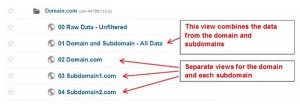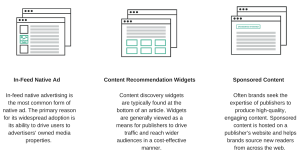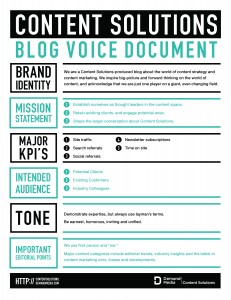
When it comes to creating a new online store website, the most important feature you want is to be deep and not wide with the products you offer. It is far better to only have a few related products than a bunch of less related ones.
If you sell toys, don’t include kitchenware items on your online store website. You want to have a tight focus of the products you carry in your online store. Even the toy category is too broad to be successful. Instead, you may want to focus on educational toys for preschoolers. While most people think more products translate into more money, the real riches are in the niches.
Many entrepreneurs, new to selling products with an online store website, feel that focusing only on a small segment of the market will mean they will earn less money. In fact, it’s the opposite that is true. Just like a medical doctor with a specialty such as oncology earns more than a family physician, the same is true for an online store website that focuses on a small and targeted niche. To charge a 30% premium over similar products, which you can often do on a specialty website, you need to be an inch wide but a mile deep.
To test a new concept for an online store, you want to be able to create your website fast and easy so if it does not work, you do not have too much time and money tied up in it. Shopify is the Do-It-Yourself (DIY) way to go to get started with an online store website. You can often create a Shopify store in less than an hour or two. More traditional websites will require much more time and money to set up and, if the store does not get enough traction, that money is flushed down the drain. Think of your Shopify site as a minimally viable product (MVP) to test your online store idea. While a Shopify store is not the best option for a successful store, it is a great way to get started and validate that your niche site can gain traction.
Fast and Easy Online Store Website
One advantage of Shopify is that, rather than building a custom online store website from scratch, which often costs more money upfront, Shopify gives you lots of go-fast tools and charges a monthly fee to keep the website active. Over time, these monthly charges add up and it may make more sense to move a successful store off the platform.
While a Shopify store is a great way to test an online store’s concept, it has some shortcomings.
When it comes to your domain name for your online store website, don’t buy it from Shopify. If you buy your domain from Shopify and later decide to move your site, there will be a 60-day waiting period before you can transfer your domain.
When you have a Shopify store, you are not in complete control of your data or intellectual property (IP). Shopify can see your data and activity, and one way they make money is that they sell this data to third parties. Moreover, Shopify can shut down your site for various reasons without your permission.
When you have a Shopify online store website, you will want to periodically back up your product data to a CSV file. Then, if Shopify shuts down your site, you will at least have a backup that you can restore to a new site.
Custom Online Store Website
If and when it makes sense to move your online store off the Shopify platform, WordPress with a WooCommerce plugin is a great option. Both WordPress and WooCommerce are free. All you need is a domain to set up a custom online store website. WordPress offers a bunch of free and paid themes you can use to get your old Shopify site up and running on your own WordPress site. The initial configuration may be a bit more tricky for anyone who is not familiar with building an online store website, however, platforms like Upwork.com have a wealth of low-cost highly skilled offshore resources that you can hire to help you. Personally, I have a developer MissB in India that I have used for years to help me with configuration issues on an as-needed basis.
A hybrid approach between the DIY platform like Shopify and a completely custom-designed online store website is offered by service providers like Cardsetter. This hybrid solution provider will handle all the technical setup and ongoing support for a monthly support fee similar to Shopify but you will own your data and interact with the data side while leaving the custom coding side to them. These hybrid solution providers offer low setup fees, often around $ 200, to build and configure your site and help with the migration of your old site. Then, you pay them a monthly subscription fee for an all-included support plan.
Other platforms for online stores like BigCommerce have great solutions for online store websites when your products are selling really well.
Where it gets a bit complicated with an online store website is when the products that you are selling are subject to sales tax collections when you surpass various sales tax jurisdiction thresholds. While every state can have its own threshold for collecting sales taxes for an online store, most states followed the lead of South Dakota and have established that $ 100,000 in total sales in that state will trigger the collection of sales tax.
Tools like TaxJar offer solutions to calculate the appropriate sales tax and provide you with reporting information so you can remit your own sales taxes, as well as offering AutoFile services, for an additional fee.
Payment Methods for Online Store
When it comes to collecting payments from your customers, most will pay with a credit card. To accept credit card payments online, you will need to connect a payment processor to your website and your bank. The most popular choices for a payment processor are Shopify’s Basic Plan for Shopify sites, Stripe, and PayPal.
In all three cases, the basic plan processing fees are identical i.e. 2.9% plus 30 cents per transaction. Each payment processor has additional upgrade features that you can add to the basic plan.
If you have a Shopify website, Shopify offers its own payment processing and does not require interaction with a 3rd party payment provider like Stripe or PayPal. Shopify and Stripe will automatically deposit your funds into your business bank account with a 2-day average payout time. PayPal funds are immediately available in your PayPal account, however, to transfer the balance from your PayPal account to your bank account can take one to several days depending on your bank’s clearing process.
If you have a Shopify store, the Shopify payment processor is a seamless way to accept payments. Stripe’s claim to fame is that it is extremely flexible, but the result is that its installation is much more difficult for non-developers. PayPal’s sweet spot is that it offers better online brand recognition, is the leader in online payment processing, and is available in more countries.
Connect Analytics to your Online Store
The final step in setting up your online store website is connecting your website to analytics. Adding analytics to your website involves signing up for a free Google Analytics account and adding a few lines of code and tags to your website so Google can track and report user behavior.
It is also recommended that you create a business Facebook page and business manager account in order to run ads and respond to customers via Facebook messenger. Facebook uses what are known as Pixels to gather information about users and their actions. Facebook also allows customers to ask questions using the Facebook messenger feature so you can see and respond quickly to customer inquiries.
Are you ready to set up your online store website?
Special thanks to Michael Beck for his review of this post. Michael is a SCORE colleague and a maven when it comes to selling online products. Michael is the CEO of BeckTan and Groupe Beck, two businesses that provide consulting services for entrepreneurs with online stores. He is a serial entrepreneur with a wealth of business experience having built more than a dozen successful businesses.
Digital & Social Articles on Business 2 Community
(54)







